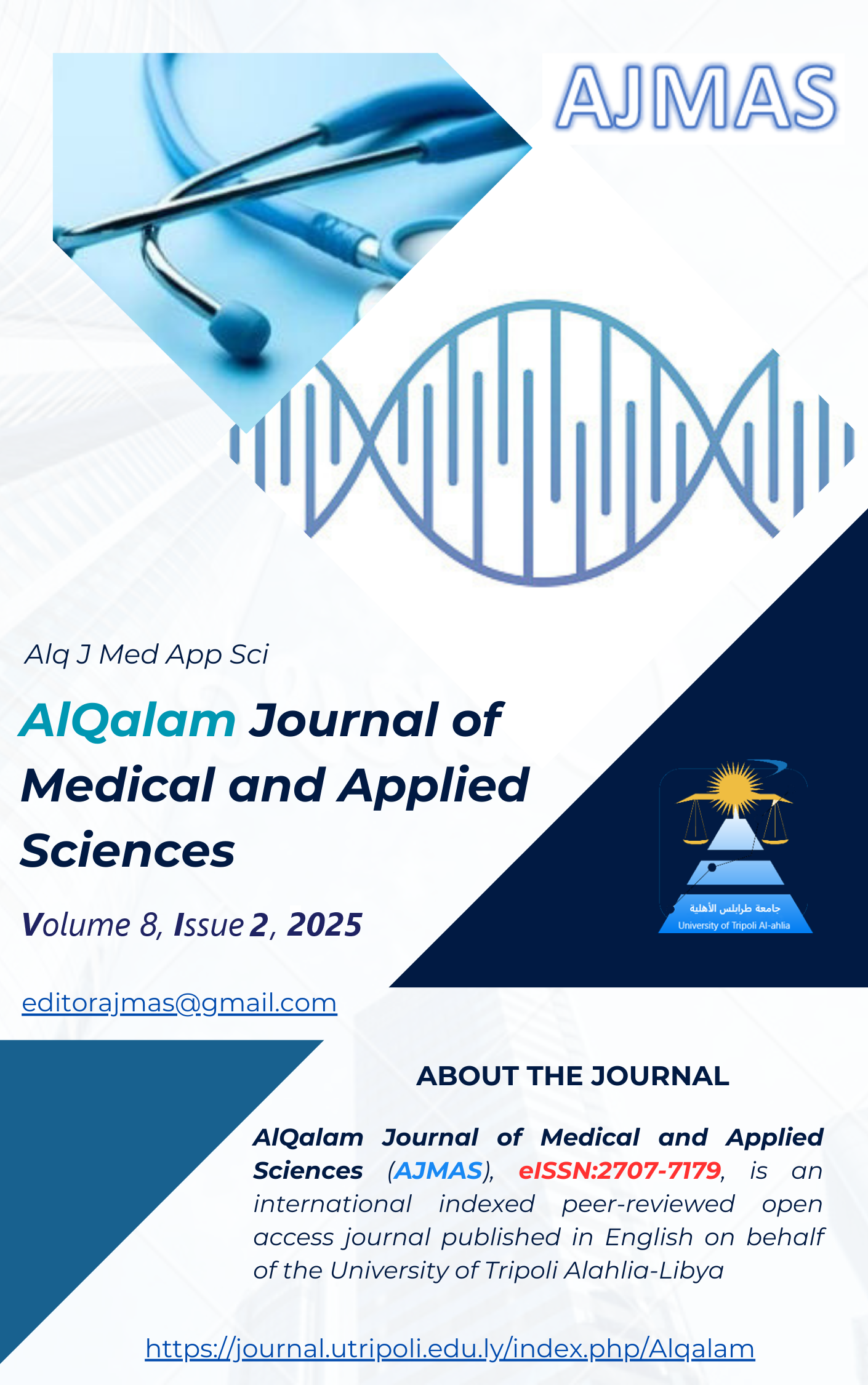Prevalence and Risk Factors Associated with Escherichia coli Sepsis in Neonates: A Cross-Sectional Study from Zawia Medical Center, Libya
DOI:
https://doi.org/10.54361/ajmas.258258Keywords:
Neonatal Sepsis, Escherichia Coli, Risk Factors, Libya, Mortality.Abstract
This retrospective cohort study investigated the prevalence, risk factors, and outcomes of Escherichia coli (E. coli) sepsis among neonates admitted to the Neonatal Intensive Care Unit (NICU) at Zawia Medical Center, Libya, from 2018 to 2019. Analyzing 411 neonates, E. coli was identified in 2.7% of culture-confirmed sepsis cases, with significantly higher mortality in E. coli-positive neonates (45.5% vs. 15.8%, p=0.022). Preterm birth was a key risk factor (72.7% of E. coli cases, p=0.04), alongside elevated C-reactive protein (CRP) during clinical deterioration (p<0.0001) and blood transfusion history (72.7% vs. 17.3%, p<0.0001). No associations were observed with sex, birth weight, or maternal age. The study highlights E. coli’s outsized impact on mortality despite its low prevalence, emphasizing the vulnerability of preterm infants in resource-limited settings. Challenges in diagnosis, rising antimicrobial resistance, and gaps in local surveillance underscore the need for improved infection control, context-specific empiric antibiotic protocols, and enhanced laboratory capacity. These findings advocate for targeted interventions to reduce neonatal sepsis burden in Libya, prioritizing preterm care and strengthening microbiological monitoring to guide clinical and public health strategies.
Downloads
Published
How to Cite
Issue
Section
License
Copyright (c) 2025 Mufeedah Mansour, Rami Al Marimi

This work is licensed under a Creative Commons Attribution 4.0 International License.















